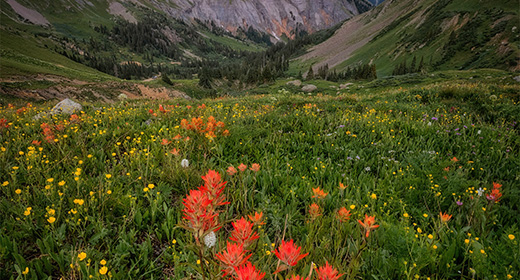Donna Quesada: That’s just precious. We have come back to the essence. By coming back to a single mantra and its overtones.

We are bringing ourselves back to a kind of simple essence of what sound is.
Jill Purce: When we are learning the mantra, which I will come to in a moment… it’s just a continuous note. It’s not even a mantra. It’s a continuous note, but by changing the shape of the cavities, we are able to hear the sounds it contains, which normally we don’t hear except as a kind of color. We call it, in music, the tone-color. It’s the quality of the sound. It tells us whether we are listening to the same note… for example, to a flute or a clarinet. You, your mother or your sister… It tells us where the sound is coming from. We don’t know more than that, really. That’s how we use it. And we use it in speech, of course. It’s the constituent parts of the vowels. The vowels are made of harmonics. So, without being able to perceive harmonics and language…
DONNA: I remember one of my own teachers saying something along the lines of the healing power of our own voices. And he used to encourage us to record ourselves and listen back to it. Do you think there is something intrinsically healing about our own voice and hearing our own voice?
JILL: I think just in practical terms… If you are learning to do this harmonic chant… Overtone chanting. It’s very helpful to hear yourself. One of the things is that when we are learning, we tend not to hear the harmonics in our own voice because we have a very elastic concept of what we are hearing, which allows it to be something we are familiar with, not what is actually happening. So, if we record ourselves and listen to ourselves objectively, as something else, then we can hear it much better. So, as far the didactic quality of it, it’s very useful as a meditative practice. I’ve never thought of our own voice as being particularly healing. The activity of doing it certainly is.
DONNA: And so, can we talk about mantra, and maybe you can play us something?
JILL: Maybe before we move on from harmonics, I might demonstrate it. So, I am just going to sing one note and try to differentiate it out. And I might use my hand to indicate the different pitches. (Chanting) See how you could hear different…
DONNA: Oh, yes. It was Luscious. It’s amazing how you create those different sounds and textures through a sustained hold like that.
JILL: Just one note. I can play you the sounds of a group doing that… chanting together. It’s really… people talk about the music of the spheres because the harmonics have a very ethereal quality. They have no harmonics, so they are very pure. Bell like. So, when you are chanting together, you hear the sort of drone of the group, but then you hear these high flute-like sounds floating in space around you, which are… it’s like the music of the spheres (Chanting Recording).
DONNA: Luscious. I saw Tibetan monks chanting in a similar way once in a performance setting. And it’s so special… and it really transports into a meditative state.
JILL: Yes. Absolutely. That’s why I do it. So, your question about mantra. It’s very interesting. I mentioned just in passing that the whole western idea… The western idea starts in the bible, with Abraham. He leaves his father and he goes on this journey from his land. This is what salvation history and all Western History is based on. It’s going from somewhere to somewhere else. This leads us to evolution, development, discursivity. Everything linear. Everything temporal. And this has built in it, the problem of what might happen in the future… the fear of our enemies and the fear of our future. The fear of what might happen.
We feel in the present, it’s not there. So, what Mantra does is it uses language, but it doesn’t use it as a discursive sentence. Usually, mantras are made up of words. Each of which has a quality of enlightenment. And they are sort of strung together. But anybody who tries to say them as a sentence doesn’t understand the principle. And you can have whole teachings on each of the words. Each has a quality of enlightenment and then they are repeated. They are repeated and repeated. It’s like it’s corralling the mind. It’s stopping the mind wandering off into the future.
So, western music has time signatures from dancing. It’s about going from here to there. Where as mantra chanting is circular. It spirals. It’s corralling the mind so that you can’t wander off. It’s repeated and the words don’t actually mean anything so there isn’t a beginning, a middle and an end of the sentence, although there kind of is. Sequentially… words.
And at the same time, a mantra is traditionally kept very secret. So, it’s not… you don’t read mantras in books, so traditionally you only use mantra if you receive the transmission from somebody who has mastered the mantra. So, you are actually getting the breath from someone who has mastered it. And they have had it from somebody else who has mastered it. So, it comes from this lineage of transmission through a lineage of teachers, for example, who have all mastered it.
And so, it builds a kind of field. Anybody who has ever used that mantra to achieve a consciousness, or enlightenment, or whatever you’d like to say… that’s all added into the field, so when somebody else comes and uses that mantra, they are happening into an increasingly large field of enlightenment, which is being added to by everybody who uses that mantra. And if you use it in the wrong way, which is like blaspheme, there is like a hole in the boat and everything leaks out. But if it’s contained in the right way, then it builds and builds and builds. The morphic field of attainment builds and builds and it gets stronger and stronger for everybody that uses it and adds to it. So those are some of the features of mantra.
DONNA: You know, you said something that is so beautiful and I don’t want it to get lost in the wind. A perfect field of enlightenment. That’s just gorgeous. So, the mantra is taking us into this morphic field. I love your husband’s work as well, and he uses this expression “morphic.” And I love it. And so, I’m thinking around those lines of how we are connected in an etheric, energetic, or telepathic way in this field. And the mantra, if I understand you correctly, is guiding us into this field of connection?
JILL: Yes. And the mantra is the field, in a way. I mean, so every time we use the mantra, you are building the field. We are making it stronger, stronger and stronger. So, every subsequent person who comes to use that mantra is plugging into an increasingly powerful field.
DONNA: This is fascinating. We are breathing life into it in a way that I think is not commonly understood. Okay. Here is the mantra. I did my practice. I’m done. But this thing is alive. It’s not just something that you chant and then are done with it. It continues to augment itself!
JILL: Yes. And whenever we use it, we add to it.
DONNA: It’s the sacred space that we add to. It’s living.
JILL: Exactly. And that’s why it’s important that in the tradition, mantras are given in secret. There is no leakage involved. That’s why they are carefully guarded. You may be given a very common mantra, but you are given it in secret. You get the breath because it’s contained within the field. There are no leaky boundaries, traditionally.
DONNA: Where did they originally come from? I heard something that was very pretty. Please say whether or not this is true, in so far as you believe and teach… that they were originally heard from enlightened souls. Sounds that were heard by souls in an enlightened state.
JILL: We really don’t know. If you look at the Hindu Yogic tradition, for example, there are thousands of mantras. Every tradition has many, many mantras. Nobody has got a clue but you could say The Divine Being heard the sound himself and whispered it to someone who wasn’t so enlightened and got it a bit wrong and whispered… the telephone game. And some Mantras don’t mean anything either, which is interesting. They are a bit like the nonsense syllables you get in folk songs. Or Children’s nursery rhymes.. Hickory, dickory, Dock. Who knows? We really don’t know how they originated. And anyone who says they do, you can just know that’s not the case. Nobody knows.
DONNA: And is one just as good as the other? Is Wahe Guru just as good as Ohm?
JILL: I think it just depends on the lineage that you’re linking into. It depends who your teacher is. What their lineage is. Because traditionally, you would link into someone who is linked into a lineage. So that’s why you just don’t pick up a book and arbitrarily choose a mantra. So in that sense, it is important that you feel a connection.
DONNA: So we imbibe it with the sacredness…
JILL: Yeah.
DONNA: Could we chant a little bit together?
JILL: Sure. Yeah. A mantra or what?
DONNA: Yeah. Just to get a taste of what you do and how you work with mantra.
JILL: Well, okay. One of the beings that I work with… I do various things. I give workshops (and consultations) and I do these very intense week long intensives, which are… What I’ve done is I’ve created a whole ceremony where the group becomes the mandala. The mandala is the structure of consciousness.. And it’s a diagram that you go through in space. You go through the year. You go through the day. You go the afflictive emotions based on what I was talking about and each of conflicting emotions has its corresponding wisdom, so if I’m working with 100 people we have four circles. And by the end of the week everybody has been in every single position in relation to everybody else in that whole structure.
It’s very complex and chanting continuously for like a week. So the mandala is the structure of consciousness, but it’s also the palace of the Deity. So, deities in the sense of being embodiments of certain aspects of enlightenment. And so, the ones that I have been working on with the mandala on these weeks is Tara.
Tara is this manifestation of feminine. The power of the feminine. She vows to become enlightened as a woman. So, she has many aspects. She has green taro which is lightening action… and answering your prayers immediately. White taro… longevity and healing. And red taro is about relationships, desire, passion, and compassion. And then yellow taro is about prosperity and lucidity. Beneficence. So, they all have their different qualities.
DONNA: So, depending on what your need is, you would appeal to that particular deity with what the mantra corresponds to…
JILL: Exactly, except what I’m doing if you go back to Praise, Petition, Participation… Rather than appealing to each petition, it’s more participation. We actually become them.
DONNA: I love that.
JILL: So anyway, Tara’s mantra is one that I use a lot. And Tara’s mantra is a very interesting one because there’s a lot of “T” sound. It’s Om Tare Tuttare Ture Soha. And the seed syllable is Tam. So, it’s this very Strong collection of Ts, which is kind of mysterious. It doesn’t really mean anything. Om is the original sound. Soha is so be it and then there is Tare Tuttare. It’s a very mysterious mantra, but we can do it together.
DONNA: I think I’ve heard the mantra but I haven’t participated in this way.
JILL: Another thing about mantras is that there are many versions. There are many melodies. And again, that depends on the kind of tradition that you are working in. So, the same mantras will have hundreds of different melodies as well, so this is just a simple one that has just two phrases to it. And when we are chanting mantra again, it’s essential to listen to the sound in this indicative way. There is no separation between you and the sound. So, you, the sounder and you the listener all become one. So, it’s probably easier because we are very visually dominant. For literacy, it helps us in the beginning to close our eyes when we are doing it. It helps us to listen and integrate.
(CHANTING)
DONNA: It’s so soothing. I felt like someone was blessing me.
JILL: Yeah.
DONNA: With something precious and calming.
JILL: Absolutely. Yeah. Tara is a wonderful being and since the lockdown I’ve been working online. In the beginning, I thought I would have to stop working all together because my work is about social intimacy and all the things we can’t do… Being close together. Being communicative. But then I discovered that I can actually do both aspects of my work online. And it is amazing.
So, I can do the voice work workshops. I just did one last weekend and I can do the family constellations online. And I’m doing one a month, alternating. So, one month, I do voice and one month, consolations. And it’s quite extraordinary. The one thing I can’t do is the mandalas because we have to be together physically. So, I haven’t figured out a way of doing that. But the other two aspects I can certainly do online.
DONNA: That’s amazing. So, you’ve found that it is just as tangible and healing and it comes alive, online?
JILL: Absolutely. The work is beyond space and time anyway. That’s the whole point of it. Especially with the Family Constellations, which I’ll talk about in a minute. It’s about seeing the family through time. Seeing the family through the eyes of multiple members. So, it’s totally beyond space and time anyway. So doing it online… It just means that we can all be together in a much bigger community from all over the world… and see the family. I have all these little figures I can move around, so you can actually see the family. It’s amazing. And actually, I’m loving doing it online. I never thought I would like working online, but I’m loving doing it. And people seem to like it, too.
Jill Purce is a British voice teacher, Family Constellations therapist, and author. In the 1970s Purce developed a new way of working with the voice, introducing the teaching of group overtone chanting, producing a single note whilst amplifying the vocal harmonics. She is a former fellow of King’s College London, Biophysics Department and has produced over 30 books as General Editor of the Thames and Hudson Art and Imagination series. Between 1971 and 1974 she lived and worked in Germany with the composer Karlheinz Stockhausen. Since the early 1970s she has taught internationally-diverse forms of contemplative chant, particularly overtone chanting. For over twenty years she has been leading Family Constellations combined with chant. HealingVoice.com
She is the author of The Mystic Spiral: Journey of the Soul a book about the spiral in sacred traditions, art and psychology, as well as numerous articles.
Read and Watch Part 3 Here: Awaken Interviews Jill Purce – Pt 3 – The Resonant Field of Family Constellations
Read and Watch Part 1 Here: Awaken Interviews Jill Purce – Pt 1 – Awaken to the Presence of Spirit in Every Moment of Every Day









































